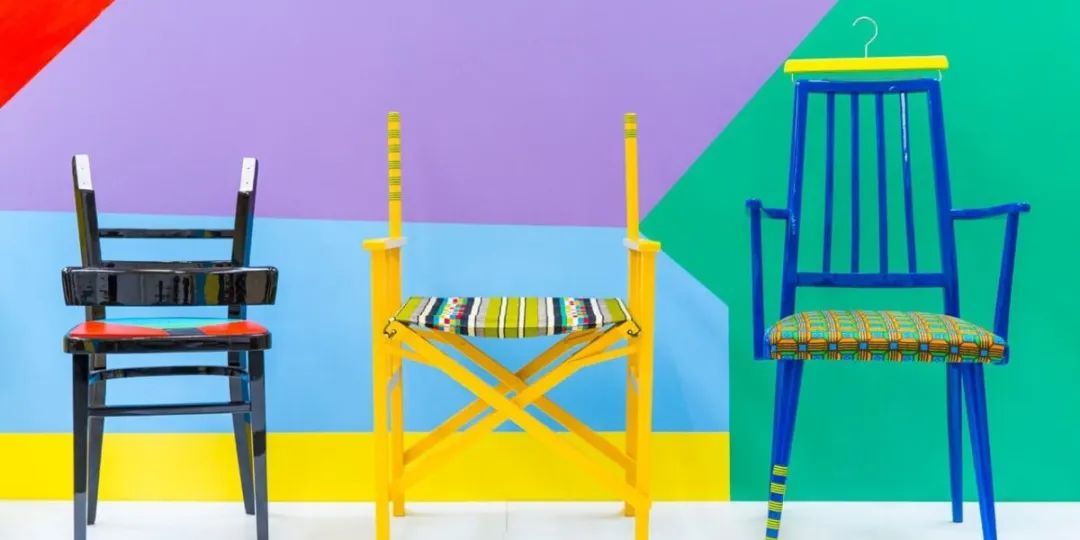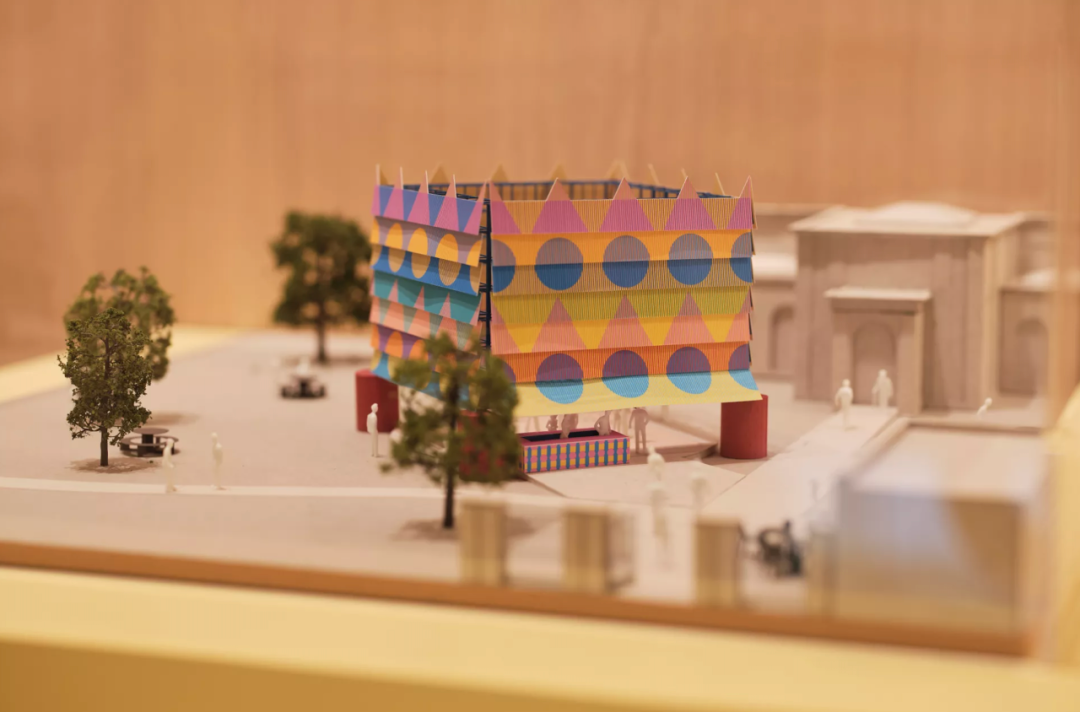Interview with Yinka Ilori: What's the Key to Happiness?
)

In a world filled with designers, few are genuinely happy. Born in 1987, the British-Nigerian designer Yinka Ilori is renowned for his vibrant designs inspired by Nigerian traditions. After graduating from the Furniture and Product Design program at London Metropolitan University, he founded the Yinka Ilori Studio in 2017.
In an era dominated by anxiety and uncertainty, Yinka Ilori maintains an almost "blind" optimism, striving to inspire every weary modern individual and incorporate a broader audience into the objects he designs. Perhaps color is the most instinctive, thought-free prompt, reminding us not to forget to embrace happiness. "As adults, we often get caught up in the seriousness of daily life, responsibilities, and challenges. We tend to forget the importance of play, laughter, and genuine connections with others. I believe that incorporating fun and unexpected elements into my work can immediately uplift our spirits, even if only for a brief moment," says Yinka Ilori.

A Tale of Love, Growth, and Happiness
If you were to ask where Yinka Ilori's happiness originates, the answer undoubtedly lies in his Nigerian family, culture, and the vibrant, playful universe of colors that defines him.
As a descendant of Nigerian immigrants, Yinka Ilori and his two siblings grew up on an estate in North London. It wasn't until his first visit to Nigeria, meeting his grandparents, and engaging in conversations in Yoruba, immersing himself in his cultural roots, that Yinka Ilori felt an unprecedented connection to Nigeria. "It was a very special moment."
After graduating from university and completing an internship at the LEE BROOM studio, Yinka Ilori found himself uncertain about the path his career should take. His approach was to look back at his origins when unsure of where to go next. The traditional fables his parents told him as a child became a wellspring of inspiration, providing new understandings and meanings today.
"I love telling stories and exploring memories through design."

In 2015, Yinka Ilori gained recognition with his project "If Chairs Could Talk," where he transformed discarded chairs found on the streets. Giving these abandoned chairs new colors and skins, the project became a hit at the London Design Festival and marked the first time this young designer entered the public consciousness.
If chairs could speak, they would undoubtedly narrate Nigerian fables through the voice of Yinka Ilori. A local proverb states, "No matter how long a giraffe's neck is, it cannot see the future." Each chair in "If Chairs Could Talk" is named after individuals Yinka encountered in his childhood: children facing troubles in school, those abandoned by teachers, and those struggling to integrate due to English not being their first language. Yinka Ilori encourages us to approach people perceived as outsiders with understanding and inclusive perspectives, rather than making judgments based on preconceived notions.
"Our parents always told us stories about jealousy, love, and respect, and I've always wanted to try and share their stories through my creations."
From a single chair to an entire city, design can accomplish much more than you imagine
Yinka Ilori, often playfully called the Willy Wonka of the design world, creates an unreal passage for everyone with his bold use of color, leading to one story after another. Describing himself as a storyteller, Yinka Ilori weaves Nigerian tales seamlessly into contemporary design, whether it's in furniture, installations, or even entire cities. It's like he's casting a spell, intertwining Nigeria's stories with modern design.
"That immersive, dreamy, and fantastical space. When people enter here, they struggle to breathe, lose focus, and you enter a different world."
In the "Happy Street" project commissioned by Wandsworth Council, Yinka Ilori transformed a dark space under an old bridge into an inviting area for pedestrians and cyclists.

The safety hazards arising from darkness are no more; instead, there are 16 colorful enamel panels with rich patterns, complemented by nighttime lighting. This encourages everyone passing through to be more conscious of their surroundings. Even from the Nine Elms trees, one can witness the spectacular sunset over the Thames.
In the summer of 2019, in collaboration with the architectural studio Pricegore, Yinka Ilori applied a similar concept to the design of "The Colour Palace" outside the Dulwich Picture Gallery in London. The idea was to create a design accessible to everyone. Using the city as a canvas and reimagining the space, the entrance to the "palace" was deliberately twisted 45 degrees, inviting visitors to naturally enter his artwork and its surrounding environment.
This sense of public engagement consistently appears in Yinka Ilori's works, including the recent retrospective exhibition at the Design Museum. Serving as the first comprehensive overview of the designer's practice, the exhibition is located in the Design Museum's atrium, a democratic space open to visitors for free.
"If you want to tell a story about inclusive design, there's no better space to showcase it," says the Design Museum curator Priya Khanchandani. The designer himself adds, "I hope people like me can visit the museum, and I also hope to open the doors for children who love design."

Color guides him from where he comes, indicating the direction he's heading. However, color is by no means the only path to understanding Yinka Ilori. With the Design Museum's exhibition on "Happiness," our interview with Yinka Ilori about the secrets of joy has commenced.
Exclusive Interview with Yinka Ilori
In previous interviews, you've referred to yourself as a "storyteller." What story do you hope to tell through the recent exhibition "Parables from Happiness" at the DESIGN MUSEUM?
I want to celebrate the intersections and fusions of cultural influences that have shaped my artistic journey through the "Parables from Happiness" exhibition. Growing up in North London exposed me to various cultures and communities, influencing my visual aesthetics and language. Through this exhibition, I aim to unfold my journey as an artist and designer, showcasing how design can convey rich narratives about people and places. My work is always about joy, celebration, and inclusivity—these are the messages I hope to convey through the exhibition.
It is a shame I couldn't see "Parables from Happiness" in person. DESIGN MUSEUM is your most significant academic research exhibition to date. Can you share your thoughts on curation and highlight some key aspects?
The exhibition was curated by Priya Khanchandani, the curatorial director of the Design Museum, and our collaboration was very close. We wanted to give people insights into my creative practice, the evolution of my work over the years, and the various influences on my art. It is structured around three main areas: architecture, furniture, and graphic design. The exhibition features over 100 items, including artworks, photos, furniture, textiles, books, and even some personal items of mine. It's like a colorful journey through my inspirations and creative evolution, from my early work renovating old chairs to my recent large-scale installations activating public spaces with color and patterns. I'm really excited to share how my Nigerian heritage and various cultural references blend in my works.
From 2017 to now, you've applied color not only in design pieces but also in cities and public spaces. How do you view the creation across different mediums and scales? What feedback have they brought you?
Creating across different mediums and scales has been an exciting experience for me. Whether I'm making a small piece of furniture or a large installation, my approach is consistent—I want to spread joy and celebrate the diversity of our world. For me, color is a universal language that can evoke emotions and create connections. The feedback I've received has been very positive. People tell me that my installations make them smile, strengthen their connection to the community, and even inspire them to view the world in a happier and more open way.
Regarding the specific application of color, do you have your own logic and principles?
Color is very personal to me, and I draw a lot of inspiration from Nigerian textiles—I've been surrounded by these colorful geometric patterns since childhood. I believe color has the power to trigger memories, create a sense of belonging, and convey emotions without words. Therefore, in my work, I carefully choose colors that resonate with the story I want to tell and the emotions I want to evoke. It's about finding the right balance between different hues to create a visually striking and emotionally engaging experience.
What does fun or a sense of humor mean to you in your work?
For me, fun and a sense of humor in my work are like guiding principles, constantly reminding us to embrace the joy of life. As adults, we often get caught up in the seriousness of daily life, responsibilities, and challenges. We tend to forget the importance of play, laughter, and genuine connections with others. I believe incorporating fun and unexpected elements into my work can immediately uplift our spirits, even if just for a moment.
Can you share the top 5 most pleasant moments you've felt in life?
I have many wonderful memories, but one of my favorites is the first time I visited Nigeria and met my grandparents. It was a very special moment. As a Londoner born to Nigerian parents, speaking Yoruba with my grandparents and experiencing the culture firsthand was incredibly moving.
The "Parables from Happiness" exhibition at the Design Museum is definitely a highlight of my career. I'll never forget sneaking through the exhibition as a "visitor" and eavesdropping on people's reactions to my work, witnessing the genuine joy it brought them. Another career highlight is having one of my chairs acquired by the Metropolitan Museum of Art as part of their collection. As a designer, having a piece permanently collected by the Met is an incredible honor. One of my favorite things is seeing my designs become a part of the structure of London itself through permanent installations in Battersea, Barking, and Royal Docks. Knowing that my designs bring color and optimism to people every day makes me very happy.

